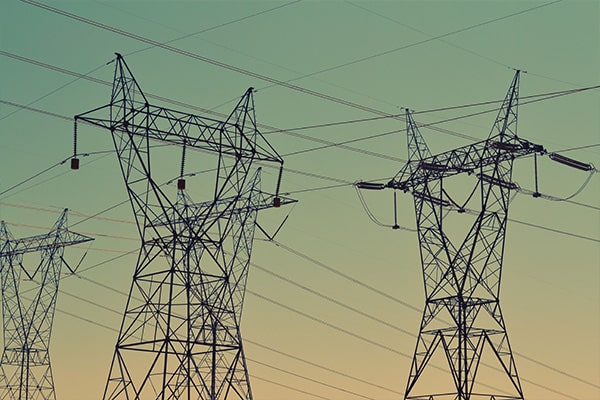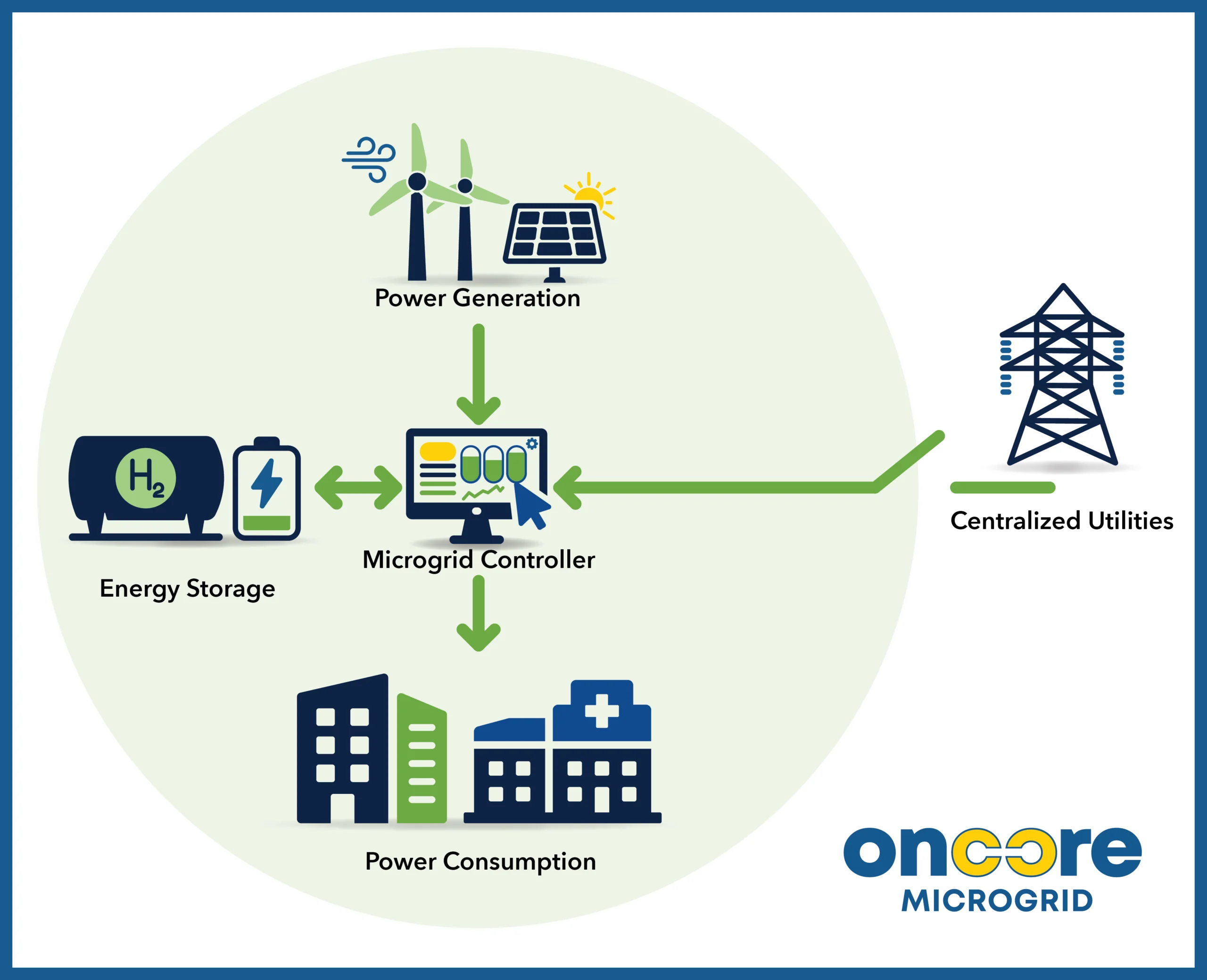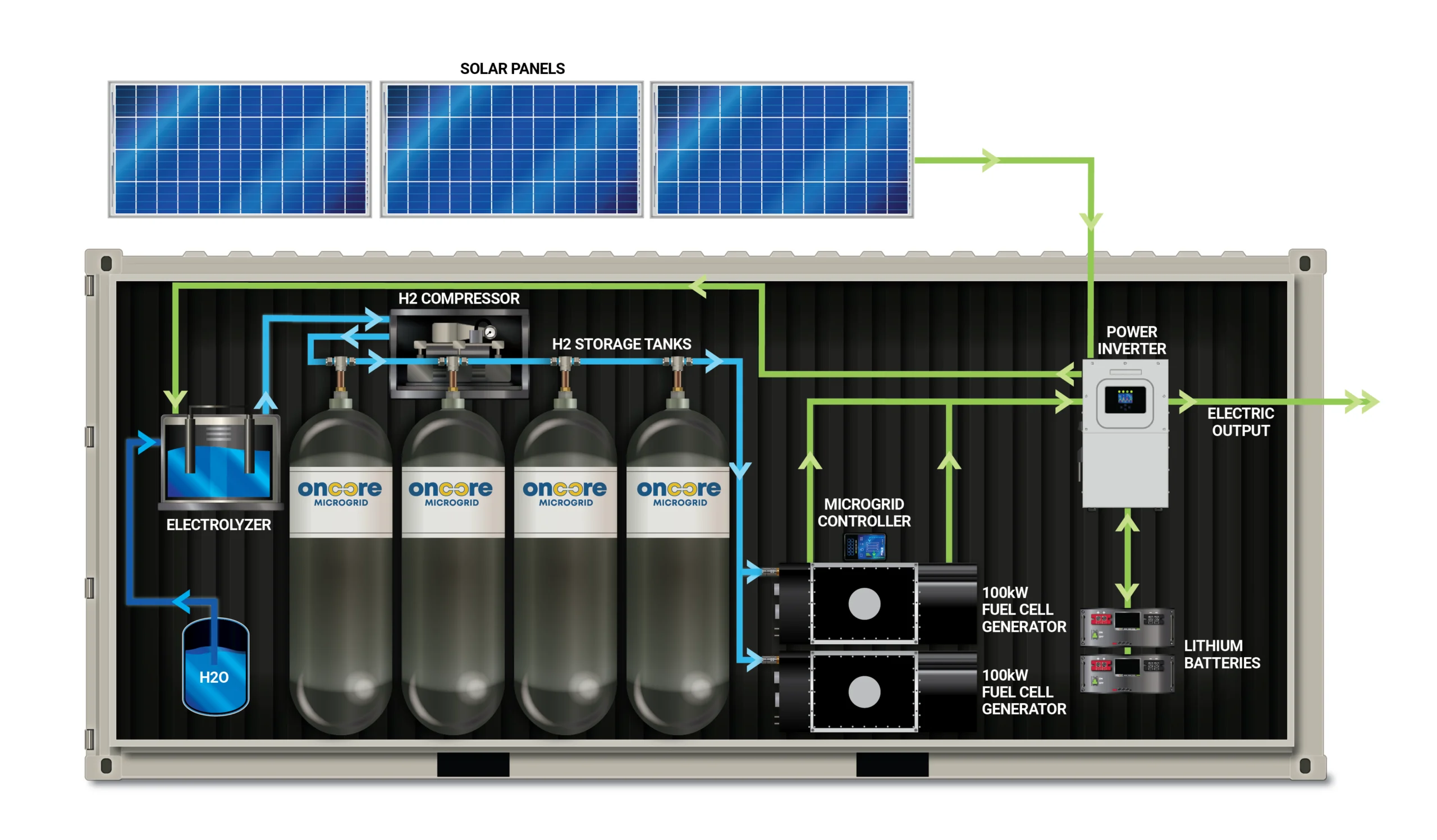The future starts today.
Oncore Microgrid Power Generator
Oncore Microgrid builds custom solutions to meet the end-use case. Detailed engineering analysis is performed to right-size each of the major components:
- Solar Array: detailed production forecasts and array recommendations for the target location
- Fuel Cells: scale from 100 kW to 1 MW
- Battery and Hydrogen Storage: sized for backup duration (hours or days)
- Optional Electrolysis or Reformer: sized to refill the hydrogen tanks at a slow, moderate, or maximum rate
This flexibility allows us to design the optimal, right-sized solution for your requirements without over-engineering or unnecessary expense when it's not required.
Benefits

Clean Energy
Replacement for diesel fuel
Hydrogen fuel cells are the best 1:1 replacement for diesel. It's carbon-free and acceptable for use in states like California that have banned generators. This can be used in any application where traditional fuel generator fuels have been used.

Control Energy Costs
With peak shaving
Energy costs are always on the minds of owners and operators of commercial operations. Energy companies and co-ops will often utilize "demand charges" during peak energy times, which leaves your operations with tighter margins. One tool that commercial operations can use is "peak shaving". Peak shaving allows companies to automatically toggle from grid power to backup power during peak times. We use our proprietary MyH2Link technology to help commercial operators reduce energy costs.

Protect Operations
Against blackouts
A hydrogen fuel cell microgrid allows your power systems to stay operational, even when the main grid is experiencing a blackout. The system is always in standby, ready to toggle to hydrogen power when the grid goes down.
Microgrid System Statistics by Power Level
Commercial setups have varying needs when it comes to power. Oncore Microgrid is designed to be modular, based on the power levels you need to keep your operation going. Our power solutions range from 100kW to over a megawatt in power capability.
| 1 MW | 800 kW | 600 kW | 400 kW | 200 kW | 100 kW | |
|---|---|---|---|---|---|---|
| Fuel Cells (kW): | 1000 | 800 | 600 | 400 | 200 | 100 |
| Inverters (Count): | 20 | 16 | 12 | 8 | 4 | 2 |
| Electrolyzer (kg/Day): | 750 | 600 | 450 | 300 | 150 | 75 |
| Tanks (kg): | 1000 | 800 | 600 | 400 | 200 | 100 |
| Auto-Transfer: | msecs | msecs | msecs | msecs | msecs | msecs |
| Backup at 66% Load: | 24 h | 24 h | 24 h | 24 h | 24 h | 24 h |
| Refill H2: | 32 h | 32 h | 32 h | 32 h | 32 h | 32 h |
| Live Telemetry & Diag: | ||||||
| Use Cases: | ||||||
| - Backup Power | ||||||
| - Energy Arbitrage | ||||||
| - Curtailed Solar | ||||||
| - ESG |
Financing Microgrids
Since Oncore Microgrid uses hydrogen, there are incentives available to cover 30%-80% of system costs in the form of rebates, tax credits, and grant programs. Depending on your situation, you may qualify for incentives to help make the capital expense of a microgrid well within reach.
Our nation is vested
The U.S. is vested in a National Clean Hydrogen Strategy and Roadmap, including $8 billion for Regional Clean Hydrogen Hubs.
Incentives abound
Significant federal and state tax benefits or rebates are available. Some use cases qualify for 80% or more of cost reimbursement.
Benefits are local
Federal and state support is wonderful, but it's local employees, families, and communities that reap the benefits of clean, quiet, resilient, renewable energy - all delivered from the hydrogen microgrid.



